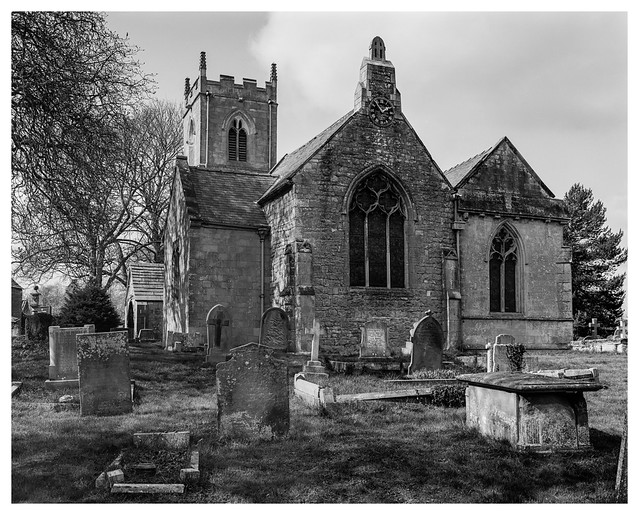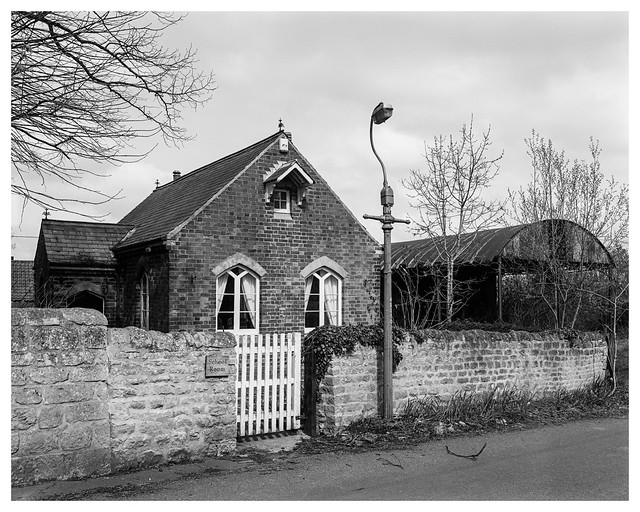As I wrote about yesterday, I visited North Leverton Windmill back at the start of the month. I shot five frames in total at the location, three of which are posted here today. The other two were both out of focus to some extent, which I put down to a combination of being in a meadow with slightly springy ground, and also because I was using a 90mm lens that I’ve got on loan at present. It’s a nice lens, but it’s huge compared to my 135mm, and the aperture locking switch is a little stiffer than my Fujinon, meaning there’s a risk of me moving the camera when operating it. I’m not sure if that was the cause here, but it’s something I need to take care with.
It was a hot day and there were few clouds in the sky most of the time I was at the site, although a few blobs of fluffy cumulus had started to appear when I took the two pictures of the windmill.
The people who look after the windmill were curious about my old-fashioned looking camera and asked lots of questions. The mill still produces flour, and is apparently the oldest windmill in the country to have seen continuous operation (it was built in 1813). They were even kind enough to set the sails in motion (even though that kinda made it more difficult to get pictures, it was great to see), and also to move the cars from the front of the mill (which you can see in the first shot), which was very nice of them.
Chamonix 045N-1. Fujinon NW 135mm f/5.6 (second shot: Linhof Super Angulon 5.6/90 on Fomapan 100) & Ilford HP5+. Ilfotec DD-X 1+4 9mins @ 20°
Taken 2 September 2023.














